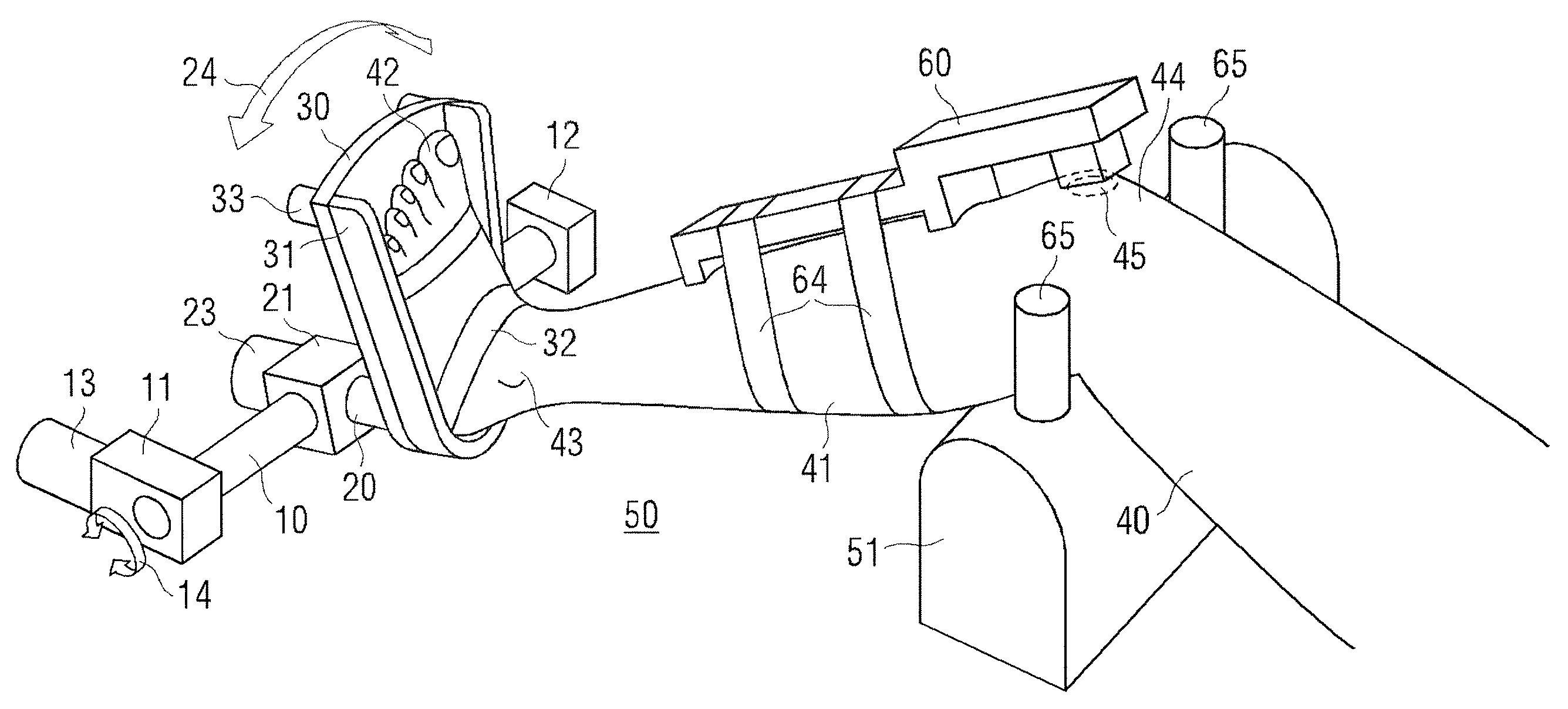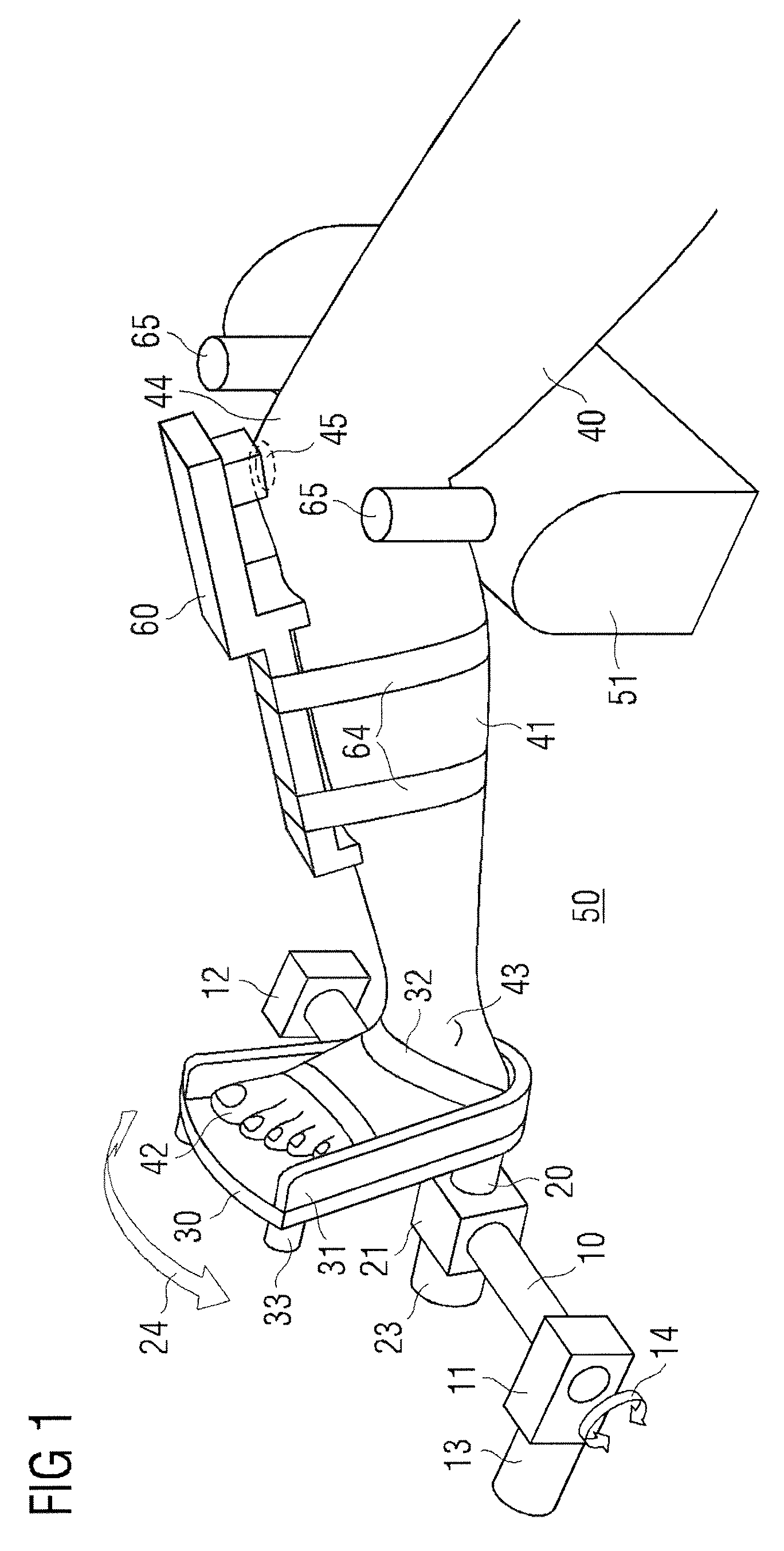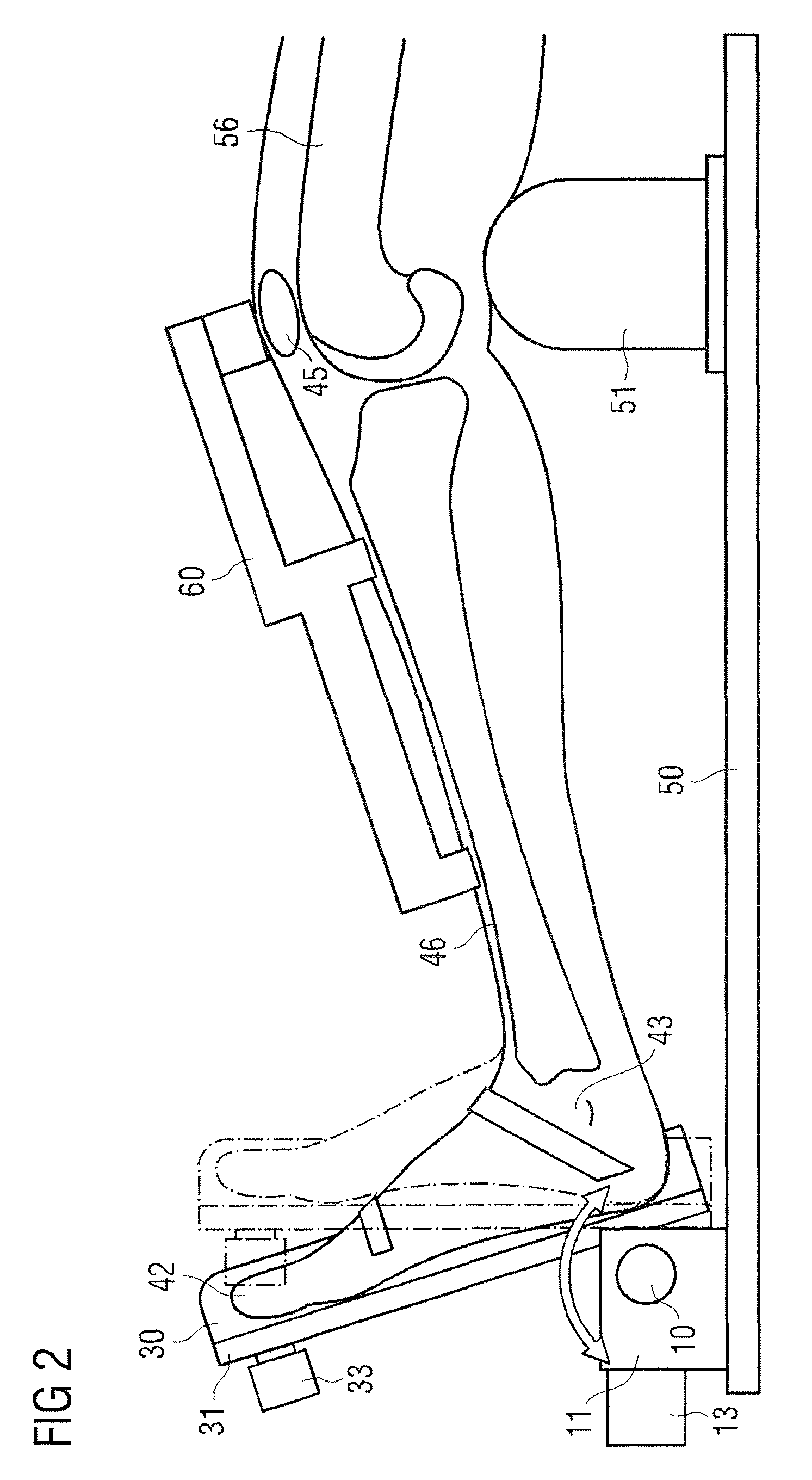Device and method for knee ligament strain measurement
a technology of knee ligaments and devices, applied in the field of knee ligament strain measurement, can solve the problems of unreproducible damage to the anterior and/or posterior cruciate ligaments, the capsule of the knee, and the inability to analyze knee stability, so as to achieve the effect of high repeatability and precision
- Summary
- Abstract
- Description
- Claims
- Application Information
AI Technical Summary
Benefits of technology
Problems solved by technology
Method used
Image
Examples
Embodiment Construction
[0043]Referring to FIG. 1, the lower leg of the patient lying on the examining table 50 is shown. It comprises thigh 40, shank 41 and ankle 43. The knee 44 is supported by a thigh support platform 51. The foot 42 is positioned into a foot support platform 30 and fixed therein by a frame 31 which may be adjusted to the size of the foot by adjustment means 33. In addition, straps like Velcro straps 32 may be used to secure the foot on the foot support platform. Furthermore, additional straps 64 like Velcro straps may be used to secure the knee against the thigh support platform 51. Furthermore, the thigh support platform may have additional side stops 65 to prevent lateral movement of the knee.
[0044]The foot support platform 30 is mounted tiltable about at least two axes relative to the examining table 50. A tilt movement 14 of the foot support platform 30 around the first axis can be performed by rotation of a first shaft 10. This first shaft 10 is held by means of the bearings 11 an...
PUM
 Login to View More
Login to View More Abstract
Description
Claims
Application Information
 Login to View More
Login to View More - R&D
- Intellectual Property
- Life Sciences
- Materials
- Tech Scout
- Unparalleled Data Quality
- Higher Quality Content
- 60% Fewer Hallucinations
Browse by: Latest US Patents, China's latest patents, Technical Efficacy Thesaurus, Application Domain, Technology Topic, Popular Technical Reports.
© 2025 PatSnap. All rights reserved.Legal|Privacy policy|Modern Slavery Act Transparency Statement|Sitemap|About US| Contact US: help@patsnap.com



